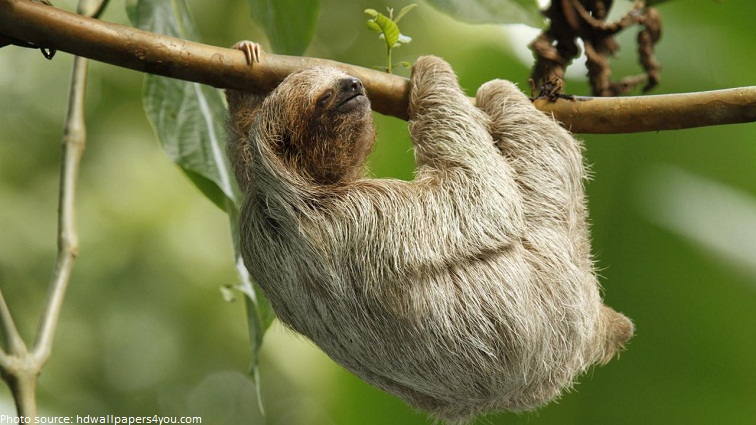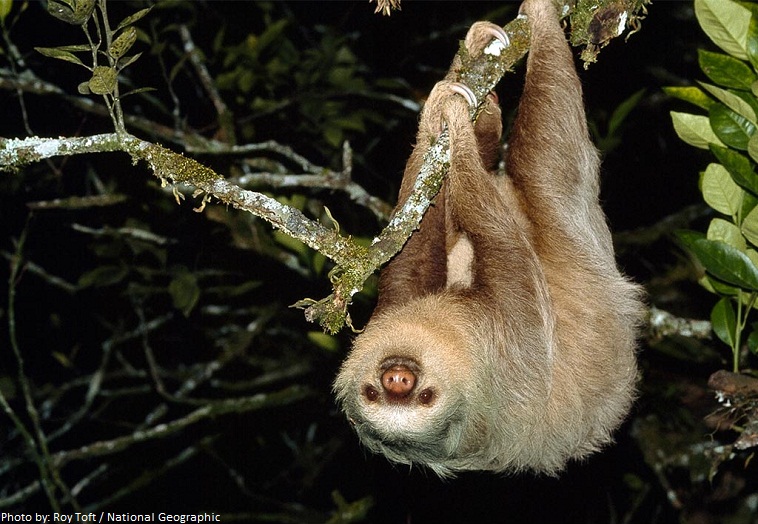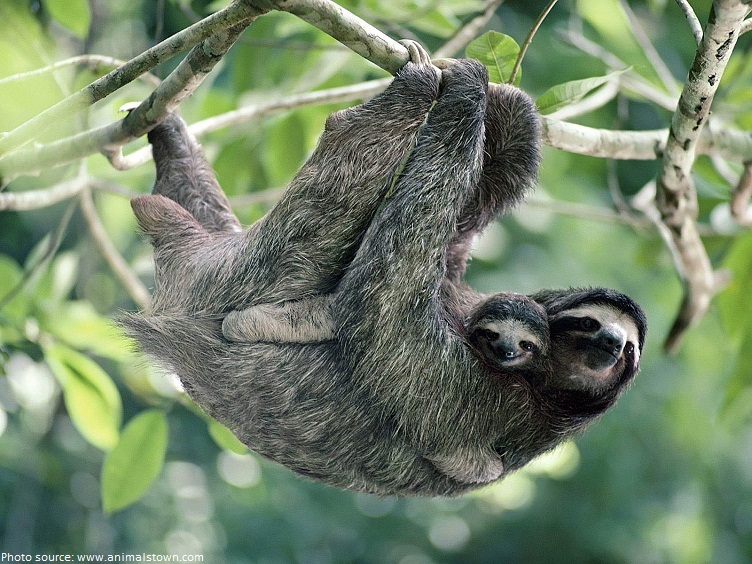Sloths are a medium-sized mammal. There are two types of sloth the two-toed sloth and the three-toed sloth, they are classified into six different species.
All living sloths have in fact three toes; the “two-toed” sloths, however, have only two fingers.
Although they’re largely similar, two-toed sloths are slightly faster, larger and have a more varied diet compared to the three-toed variety.
They are weird looking characterized by slow movement in the trees.
In fact sloth is the slowest mammal on Earth.
They are found in the rainforest canopies of Central and South America.
Their average lifespan is 10 to 15 years in the wild, but they can live up to 31 years in captivity.
Sloths’ bodies usually are between 58 to 68 centimeters (23 to 27 inches).
They weight from 4 to 8 kilograms (9 to 17.5 pounds).
Their curved, sharp claws are 8 to 10 centimeters (3 to 4 inches) long.
Sloths can move along the ground at just 2 meters (6.5 feet) per minute! In the trees they are slightly quicker at 3 meters (10 feet) per minute.
Sloths spend almost their entire life upside down in the trees. They eat, sleep, mate, and give birth from this position hanging high among the branches.
The only time sloths descend to the forest floor is to poop, which they do about once a week.
The sloths’ diet, consisting mainly of leaves, provides them with very little energy and nutrition. This is why they move very slowly to conserve the energy in their body.
Due to the low nutritional value of their leafy diet, sloths usually move at a leisurely pace and sleep a great deal.
The sloth has the slowest metabolism of any mammal on Earth it take about 25 days to digest one leaf.
Their hair is grayish brown but, at times they look grey-green in color because they move so slowly that tiny camouflaging algae grow all over their coats. This provides a camouflage against predators, by blending the color of the sloth with the color of the surrounding vegetation.
Sloths can extend their tongues 25 to 30 centimeters (10 to 12 inches) out of their mouths.
Three-toed sloths have highly flexible neck that allows rotation of head for 270 degrees in both directions.
Though they couldn’t be clumsier on land, sloths are surprisingly good swimmers.
Sloths are nocturnal, they are most active at night and sleep all day.
They sleep about 15 to 18 hours each day, hanging upside down.
Sloths are solitary animals and only come together to mate.
When a female is ready to breed she screams to attract males, which will journey toward the source of the noise in pursuit of a mate.
If more than one male reaches her at the same time, they slowly fight each other while hanging by their rear legs!
Gestation period is from 7 to 10 months, depending on subspecies.
The female gives birth (while upside down) to a single offspring.
The sloth youngster stays with its mother for 6 months to 2 years, depending on the subspecies.
Sloths predators are big forest cats like jaguars and ocelots, birds of prey such as harpy eagles, and large snakes like anacondas.
They are the only mammals whose hair grows in the opposite direction from the hair of other mammals.
Its scientific name, Bradypus, is Greek for “slow feet“.
Thousands of years ago, the giant Megatherium (aka “the giant sloth”) roamed the Earth. Megatherium was a genus of elephant-sized ground sloths endemic to South America.
Sloths increased in popularity during the early 21st century, with the release of the first of the Ice Age movies, which featured Sid, a prehistoric ground sloth, as a central character.




